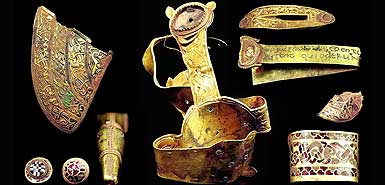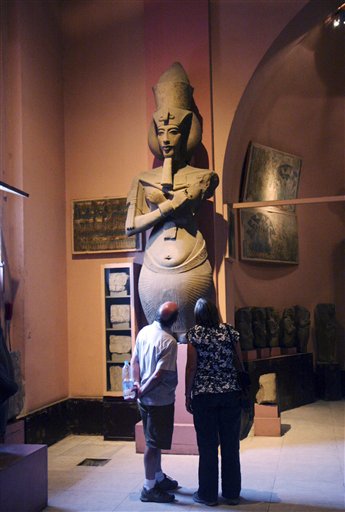
© UnknownA scrunched-up cross (centre) among other objects from 7th-century aristocracy
It's a misty dawn in Middle England, some time in the 7th century. A small band of armed men struggle up a wooded hill. At the summit they pause. While one keeps watch, the others tip their loot on to the ground. They divide up the jewels and coins, then they turn to the rest of the booty: swords, crosses, saddle fittings, which are mostly gold and exquisitely made. They hammer at them with stones and the hilts of their knives, they rip the pommels from the swords and stuff the blades into their jerkins, smash the helmets and bend the arms of the crosses until they look like nothing more than twisted pieces of metal. They stuff the small gold and bejewelled fragments into leather pouches, grub out a hole in the earth, and bury their cache. Then they disappear over the hill as swiftly as they came.
Centuries pass: William the Conqueror's Normans arrive; the Tudors squabble over national control; Queen Victoria and the British Empire come and go. The hoard remains untouched - until 1,400 years later, when an amateur collector, Terry Herbert, rediscovers it on what is now a farm. Since Terry came across the treasure, now known as the Staffordshire Hoard, using a simple metal detector last July, the story behind it has captured the public imagination. The items he discovered - more than 1,500 pieces of beautifully crafted gold and silver - have been described as the most important Anglo-Saxon archeological evidence ever found in Britain. The battle to keep the bling in the country is well under way. The government would be unlikely to grant an export licence but it could still be split up and taken abroad illegally by a private collector. Despite all the furore, the hoard poses as many questions as it answers.


